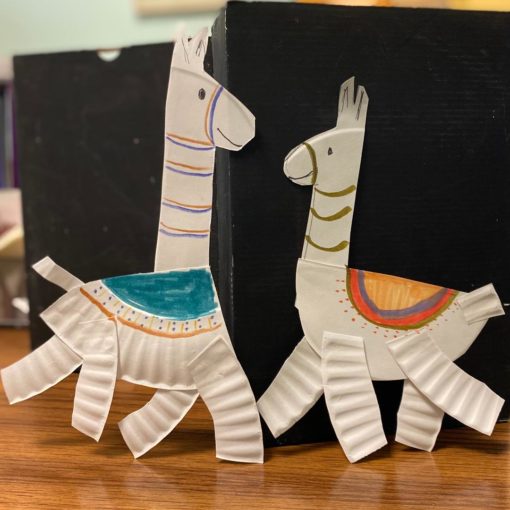Weekend Fun: Spring Bugs!
The return of the spring season is also the return of … BUGS! Whether we like them or not, insects play an important role in our world. Explore your neighborhood or one of the nature trails to see how many varieties you find.
Learn more about them by exploring the shelves at 595.7 in both children’s and adult collections at the Library, where you may find Minibeasts with Jess French by Jess French; Bonkers about Beetles by Owen Davey; the Insects as … series by Franklin Township resident Lyn Sirota; or, for older students, Bugged: How Insects Changed History by Sarah Albee. For a fantastic look at insects, try the classic chapter book James and the Giant Peach by Roald Dahl or the picture book by Rebecca Emberley based on the ancient fable The Ant and the Grasshopper.
Have some fun crafting your own paper bugs! Two short videos suitable for older students show how to make an origami grasshopper:
How to Make an Easy Origami Grasshopper
https://www.youtube.com/watch?v=KfKFEJnue9U (QB Crafts)
https://www.youtube.com/watch?v=_OI_isfuCKw (Art for Kids Hub)
Younger students and preschoolers may enjoy this easier method of making a family of paper grasshoppers:
Make a Paper Grasshopper
What you need:
• 3 strips of green or other colored paper approx. 3 inches wide x 5 inches long for the body
• 2 strips of paper approx. 1 inch wide and 8 inches long for the back legs
• 2 strips of paper approx. ½ inch wide and 10 inches long for the front legs
• 2 strips of paper approx. ¼ inch wide and 2 inches long for the antennae
• Gluestick
• Black marker
• Tape (optional)
Note: These measurements are suggestions only. You may use any size or color you wish, even different paper colors for the various insect parts.
What you do:
1. Roll the 3-inch by 5-inch paper to form a tube. Apply glue to one edge and use pressure and friction with your fingers to secure each tube. You may want one tube to be bigger than the others.
2. Glue the three tubes to together to form the body. TIP: For younger children, it may be easier to glue the three tubes onto a flat piece of cardstock (visible beneath the light green grasshopper in the photo). Tape a straw or a cardboard strip underneath to serve as a handle that allows your child to make the bug move.
3. Apply glue to the center of each of the ½-inch strip and stick them inside the first and second tube to form the front and center legs.
4. Take the 1-inch by 8-inch strips and fold each end up approx. half an inch.
5. Fold each strip at the center – but on an angle – to form the grasshopper’s powerful hind legs.
6. Tape or glue the hind legs inside the top of the center tube so that the angle goes toward the back of the grasshopper.
7. Glue the remaining strips (1/4-inch) on top of the first tube as the antennae.
8. Draw eyes with the black marker.







